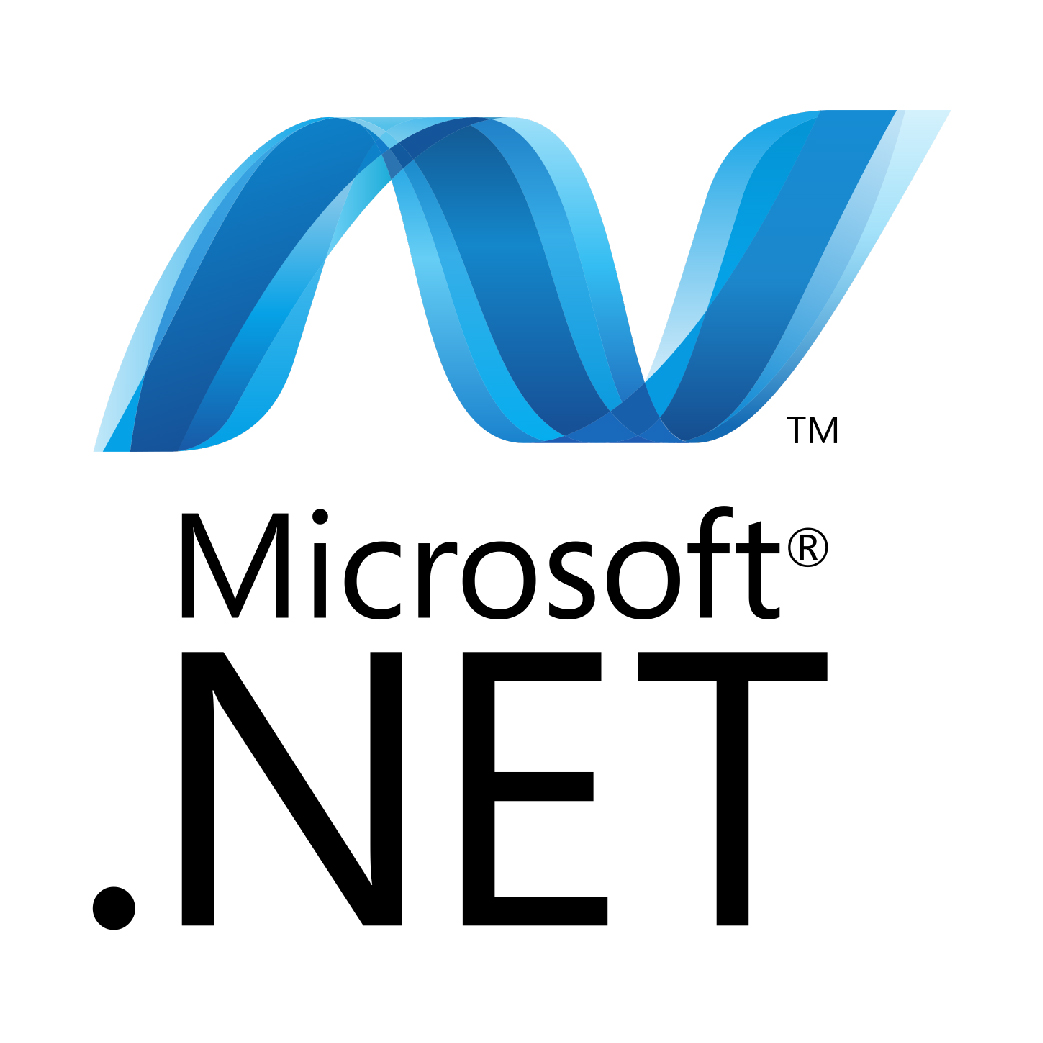.NET Technologies: Powering Modern Software Development
Unleashing the Potential of .NET Technologies: Empowering Modern Software Development.

Everything you need to know about
.NET Technologies
In today’s digital landscape, software development is critical in driving innovation and powering businesses across various industries. Among the many available frameworks and platforms, .NET technologies have emerged as a powerful and versatile ecosystem for building robust, scalable, high-performance applications. This article explores the world of .NET technologies, their key components, and their impact on modern software development. Need help with your project? We’re proud to be considered a top .NET development company that specializes in nearshore hiring.
What is .NET?
.NET is a free, open-source developer platform created by Microsoft. It provides a comprehensive and unified framework for developing various applications, including web applications, desktop applications, mobile apps, cloud-based solutions, and games. The core idea behind .NET is to enable developers to build applications running on multiple platforms and devices, regardless of the operating system.
.NET is often called a “managed” framework because it relies on a runtime environment called the Common Language Runtime (CLR). The CLR is responsible for managing the execution of .NET applications, including memory management, security, and exception handling. This allows developers to focus on writing application logic without worrying about low-level details (1).
“The .NET has been cross platform since 2016 and open source since 2014, thus creating freedom for even more developers. It’s now totally free from ARM x86 to x64.”
-C-sharp Corner
Our Executive Team

Common Industries we provide .NET Technologies:
Healthcare & Life Sciences
SaaS & Information Services
Manufacturing
Financial Services & FinTech
Retail & E-Commerce
Insurance
Logistics & Automotive
Travel & Hospitality
Learn from the best,
C# Programming Language:
C# (pronounced “C sharp”) is the primary programming language used in the .NET ecosystem, C# is not .NET (https://sonatafy.com/c-net-powering-modern-software-development/). It is a modern, object-oriented language that combines the power of C++ with the simplicity of Visual Basic. C# provides rich features and syntax that make writing clean, efficient, and maintainable code easy.
.NET Framework
The .NET Framework is the foundation of the .NET ecosystem. It includes many libraries and APIs that developers can leverage to build various applications. The .NET Framework supports multiple programming languages, including C#, VB.NET (Visual Basic .NET), and F# (functional programming language). It provides functionalities for data access, networking, cryptography, XML processing, and much more.
ASP.NET
ASP.NET is a web development framework within the .NET ecosystem. It enables developers to build dynamic, data-driven websites and web applications. ASP.NET provides a model-view-controller (MVC) architecture, which promotes the separation of concerns and facilitates the development of scalable and maintainable web applications.


Common Industries we provide .NET Technologies:

COST-EFFECTIVE DEVELOPERS
Our Software Developers and Engineers cost
on average $45 to $65 per hour

HIGHEST QUALITY DEDICATED TEAMS
Access to the TOP 1% of Nearshore Software Development resources in Latin America

TIME SENSITIVE DEVELOPMENT
Sonatafy’s Nearshore Talent Acquisition can place qualified Software Engineering teams in as quick as 2 weeks
The great question about
Modern Software Development:
.NET Core
.NET Core is a cross-platform, open-source framework representing the next generation of .NET. It is designed to be lightweight, modular, and optimized for Performance. .NET Core enables developers to build applications that can run on Windows, macOS, and various Linux distributions. It also provides support for containerization and microservices-based architectures.
Xamarin
Xamarin is a set of tools and libraries that allow developers to build native mobile applications using .NET. With Xamarin, developers can write code in C# and share a significant portion of their codebase across different platforms, including iOS, Android, and Windows. Xamarin provides a native user interface and access to platform-specific APIs, delivering high-quality mobile apps (2).
“Xamarin is a Microsoft-owned San Francisco-based software company founded in May 2011[2] by the engineers that created Mono, Xamarin.Android (formerly Mono for Android) and Xamarin.iOS”
– Wikipedia

Interested In Working With Sonatafy?
Impact of .NET Technologies on
Modern Software Development:
Cross-platform Development
.NET technologies, such as .NET Core and Xamarin, enable developers to build applications running on multiple platforms, reducing development time and effort. This cross-platform capability is essential in today’s mobile-first and cloud-first world, where applications must reach users across various devices and operating systems (3).
“Modern .NET supports multiple operating systems and devices. It’s important for .NET open-source libraries to support as many developers as possible, whether they’re building an ASP.NET website hosted in Azure, or a .NET game in Unity.”
– Microsoft
Productivity and Efficiency
The extensive libraries, frameworks, and tools provided by .NET significantly enhance developer productivity. The rich ecosystem allows developers to leverage pre-built components, reducing the need to reinvent the wheel. Additionally, the simplicity and readability of the C# language contribute to faster development cycles and code maintenance.
Scalability and Performance
.NET technologies offer excellent scalability and performance capabilities. The CLR’s managed execution environment, combined with optimizations in the .NET runtime, allows for efficient memory management and garbage collection. This ensures that .NET applications can handle high traffic loads and scale seamlessly as the user base grows. Moreover, the performance improvements in .NET Core make it a compelling choice for building high-performance, cloud-native applications.
Security and Reliability
Security is critical to modern software development. .NET technologies incorporate robust security features and mechanisms to protect applications against common vulnerabilities. To mitigate risks, the runtime environment provides built-in security controls, such as code access security and sandboxing. Additionally, Microsoft regularly releases updates and patches to address emerging security threats, ensuring the reliability and stability of .NET applications.
Integration with Microsoft Ecosystem
.NET technologies seamlessly integrate with other Microsoft products and services, providing developers with a comprehensive ecosystem for building end-to-end solutions. For example, integration with Azure, Microsoft’s cloud computing platform, enables developers to quickly deploy, scale, and manage .NET applications in the cloud. Integrating with Visual Studio, Microsoft’s integrated development environment (IDE) offers powerful tools for code editing, debugging, and collaboration.
Pros and Cons of .NET Technologies:
Pros:
- Cross-platform compatibility allows applications to run on different operating systems.
- Extensive libraries and frameworks speed up development and enhance productivity.
- High scalability and Performance ensure optimal application responsiveness.
- Robust security features protect applications from common vulnerabilities.
- Seamless integration with the Microsoft ecosystem enables end-to-end solutions.
Cons:
- Historically, .NET was primarily associated with Windows-based development, but this limitation has been mainly addressed with the introduction of .NET Core, which supports cross-platform development.
- Learning curve: Developers new to .NET may require time to become proficient in the ecosystem and its various components.
- Some features and libraries may be specific to certain versions of .NET, requiring careful consideration when choosing the appropriate framework for a project.
%
TOP NEARSHORE TALENT
%
ATTRITION RATE
%
ENGLISH PROFICIENCY
RESOURCES DEPLOYED
.NET technologies have revolutionized modern
software development by offering a powerful and versatile ecosystem.
With its cross-platform capabilities, extensive libraries, productivity-enhancing tools, and strong integration with the Microsoft ecosystem, .NET empowers developers to build scalable, high-performance applications for various platforms and devices. While there may be a learning curve and considerations for specific project requirements, the benefits of using .NET technologies make it a compelling choice for organizations seeking efficient and reliable software solutions.
What are the Tools and Technologies Used within .NET?
The .NET ecosystem provides developers various tools and technologies that enhance productivity, facilitate application development, and support multiple aspects of the software development lifecycle. Let’s explore some essential tools and technologies used within .NET
Visual Studio
Visual Studio is the integrated development environment (IDE) for .NET developers. It offers a comprehensive set of code editing, debugging, testing, and deployment tools. Visual Studio provides a rich development environment that supports various programming languages, including C#, VB.NET, and F#. It also integrates with other Microsoft tools and services, enabling seamless collaboration and integration with the broader .NET ecosystem.
.NET SDK
The .NET Software Development Kit (SDK) is a set of tools and libraries that enable developers to build, test, and deploy .NET applications. It includes the necessary components, such as compilers, runtime libraries, and command-line tools, to develop applications using .NET. The .NET SDK is essential for setting up the development environment and compiling .NET code.
NuGet
NuGet is a package manager for .NET that simplifies discovering, installing, and managing third-party libraries and frameworks within a .NET project. It provides a vast repository of packages, allowing developers to easily integrate popular libraries, frameworks, and dependencies into their applications. NuGet eliminates the need for manual package management and ensures that dependencies are correctly resolved.
ASP.NET Core
ASP.NET Core is a cross-platform, high-performance framework for building web applications and APIs. It offers robust tools and libraries for creating modern, scalable, and secure web applications. ASP.NET Core supports the Model-View-Controller (MVC) architectural pattern and provides routing, middleware, authentication, and dependency injection features. It allows developers to build web applications on Windows, macOS, and Linux.
Entity Framework Core
Entity Framework Core is an Object-Relational Mapping (ORM) framework that simplifies database access and management within .NET applications. It provides an abstraction layer that allows developers to work with databases using object-oriented programming concepts instead of writing raw SQL queries. Entity Framework Core supports various database providers, including SQL Server, MySQL, SQLite, and PostgreSQL, making it highly flexible and adaptable to data storage requirements.
Azure
Azure is Microsoft’s cloud computing platform that offers a wide range of services and tools for building, deploying, and managing applications in the cloud. Within the .NET ecosystem, Azure provides seamless integration with .NET applications, enabling developers to leverage scalable infrastructure, storage services, serverless computing, machine learning capabilities, and more. Azure DevOps, a part of the Azure platform, provides tools for continuous integration, deployment, and application lifecycle management.
Xamarin
Xamarin is a popular toolset for building cross-platform mobile applications using .NET. It allows developers to write code in C# and share a significant portion of the codebase across multiple platforms, including iOS, Android, and Windows. Xamarin provides native user interfaces, access to platform-specific APIs, and performance optimizations, delivering high-quality mobile apps with a native look and feel.
NUnit and MSTest
NUnit and MSTest are popular testing frameworks used within the .NET ecosystem for unit testing and automated testing of .NET applications. These frameworks provide a rich set of features and assertions that facilitate the creation and execution of tests. They enable developers to ensure the correctness and reliability of their code, detect bugs early in the development process, and support test-driven development practices.
Git and GitHub
Git is a distributed version control system widely used within the software development community, including the .NET ecosystem. It enables developers to track changes to their codebase, collaborate with team members, and manage different versions of their software projects. GitHub, a web-based hosting service for Git repositories, is a popular platform for sharing and collaborating on open-source .NET projects. It provides features like code review, issue tracking, and project management, making it a valuable tool for developers working with .NET.
Docker
Docker is a containerization platform that allows developers to package their applications and dependencies into portable containers. Within the .NET ecosystem, Docker provides a convenient way to create, deploy, and scale .NET applications in a consistent and isolated environment. Docker containers ensure developers run their applications consistently across different domains, simplifying deployment and promoting software agility.
Power BI
Power BI is a business intelligence and data visualization tool provided by Microsoft. It allows developers to create interactive dashboards and reports from various data sources. Within the .NET ecosystem, developers can integrate Power BI into their applications using the Power BI API or embed Power BI reports and dashboards directly into their applications. This enables the presentation of data-driven insights and analytics to end users within the context of their applications.
Visual Studio Code
Visual Studio Code (VS Code) is a lightweight, cross-platform code editor popular among developers working with .NET It offers a rich set of extensions and integrations for .NET development, providing a streamlined coding experience. VS Code supports features like IntelliSense, debugging, source control integration, and an extensive extensions marketplace that enhance productivity and customization.
These are just a few examples of the tools and technologies commonly used within the .NET ecosystem. The .NET ecosystem continues to evolve, and new tools and technologies are regularly introduced to enhance the developer experience and meet the demands of modern software development.
.NET Development Company
Awards & Recognitions
Helping take our clients’ software development businesses to the next level has been quite an experience, and we are not slowing down any time soon. Providing a memorable experience and far surpassing our customers’ software development and solutions goals is one of the most rewarding experiences of our company to date.
We’re ready to start helping your company grow with our industry-leading custom software development solution, are you?

Earning Trust & Loyalty for our Software Development Services
Our executive team proudly provides complete software development solutions in the healthcare, SaaS, Manufacturing, and FinTech fields from deployment to completion.
Our client-centric software development solutions have made us the healthcare app development provider of choice for clients such as Akido Labs, Datacubed Health, Sema Technologies, and Semantic AI, among others. With thousands of software development engineers deployed to date, clients love our personalized high-touch approach.
With high-quality delivery web development services and strong customer support and management, we give you the ability to focus on business decisions rather than software development issues.
Sonatafy Technology services can dramatically
improve the .NET Technologies.
Our Software Development Clients Have Spoken.

“We increased our productivity and quality by extending our team with Sonatafy resources. They are part of our ‘family’. Their passion, dedication, experience, and wisdom has been nothing short of impressive.”

“We have been using Sonatafy for software team augmentation. Their vetting process is extremely through and has saved us a huge amount of time. All of the candidates presented have been outstanding and have fit into our team perfectly.”

“The Sonatafy team consists of members who are dedicated, personable, and attentive. They will search tirelessly to match the right talent to meet your skills and budgetary requirements. Regardless of your situation, you cannot go wrong with Sonatafy.”

“The Sonatafy team has continually impressed us with the quality of their engineers — we have found excellent engineering leaders in their contractors who have helped tremendously. They really are an integral part of our team, and we’re very thankful for Sonatafy’s professional leadership in this space. I heartily recommend them to augment anyone’s teams or projects.”

“At IMAIGE Analytics, we are driven by purpose and outcomes. Sonatafy has been the exact type of partner we need to help us deliver on both. They’ve found solutions specific to our purpose and needs, their resources have contributed like long time team members from day one and they seem dedicated to progressively better outcomes from the start. Thanks to the team and to Steve for taking the time to make our business better!”

“The entire team at Sonatafy greatly surpassed our expectations. We require very specific skill sets and the team did an incredible job of screening and selecting top – notch candidates. Sonatafy’s attention to detail, professionalism, open communication, and collaboration with us ensured that we found highly skilled talent that fit seamlessly into our company’s culture. I can’t recommend them strongly enough.”

“Sonatafy makes it easy to find great and professional talent, with their help we have been able to solidify our team. Their process and communication is a refresher and a weight off our shoulders.”

I’ve used Sonatafy Technologies for the last 5 + years at several of my companies both small and large, in a staff augmentation capacity. I have been consistently impressed with the high – quality of technical skills as well as the team member’s high level of engagement and dedication to my projects. I’ve always considered my dedicated Sonatafy resources as members of my team , and their contributions and performance has been excellent. The combination of high performance and afford ability has been an outstanding benefit , and I would highly recommend using Sonatafy Technologies as your near shore technology partner.
The rich ecosystem of
.NET provides developers
The .NET Framework is a software development framework developed by Microsoft. It provides a programming model and a large set of libraries that enable developers to build Windows-based applications, including desktop applications, web applications, and web services. The .NET Framework includes a Common Language Runtime (CLR) that manages the execution of code, a class library with pre-built functions and APIs, and a range of development tools.
.NET Core:
.NET Core is an open-source, cross-platform framework that is a successor to the .NET Framework. It allows developers to build applications that can run on Windows, macOS, and Linux. .NET Core offers improved Performance, modularity, and scalability compared to the .NET Framework. It includes a CoreCLR runtime, a unified base class library, and various tools and libraries for application development.
.NET 5:
.NET 5 is the latest major release of the .NET platform. It represents the convergence of .NET Framework, .NET Core, and Xamarin into a single unified platform. .NET 5 provides a suitable set of APIs and tooling for building applications that run on multiple platforms. It offers performance improvements, new language features, and enhanced support for modern application development scenarios.
ASP.NET:
ASP.NET is a web application framework within the .NET ecosystem. It enables developers to build dynamic and interactive web applications using languages such as C# or VB.NET. ASP.NET offers various features and tools for creating web forms, MVC (Model-View-Controller) applications, and Web APIs. It provides a scalable and secure environment for web development and integrates seamlessly with other .NET technologies.
ASP.NET Core:
ASP.NET Core is the cross-platform and open-source successor to ASP.NET. It allows developers to build modern web applications on Windows, macOS, and Linux. ASP.NET Core offers improved Performance, modularity, and flexibility compared to ASP.NET. It supports the MVC architectural pattern and provides features such as routing, middleware, dependency injection, and support for building RESTful APIs.
.NET Standard:
.NET Standard is a specification defining a set of APIs available across different .NET implementations, such as .NET Framework, .NET Core, and Xamarin. It provides a common ground for developers to target multiple platforms with a single codebase. .NET Standard ensures compatibility and portability of libraries and allows developers to create reusable components that can be used across various .NET implementations.
Visual Studio:
Visual Studio is an integrated development environment (IDE) created by Microsoft. It offers comprehensive tools for building software applications across multiple platforms and languages. Visual Studio provides features like code editing, debugging, testing, and collaboration tools. It supports various programming languages, including C#, VB.NET, F#, and web technologies like HTML, CSS, and JavaScript (4).
“Hundreds of extensions are available to help you do anything from integrating GitHub to serving as a powerful productivity tool to make your job easier. It is also the most popular IDE for C++ and has a free version.”
– HubSpot
Visual Studio Code:
Visual Studio Code (VS Code) is a lightweight and cross-platform source code editor developed by Microsoft. It offers rich features and extensions for coding, debugging, and version control. VS Code supports many programming languages and frameworks, including .NET. It provides a customizable and efficient coding environment and has gained popularity among developers working with .NET.
Microsoft Silverlight:
Microsoft Silverlight was a deprecated technology for building rich internet applications and media experiences. It provided a framework and a runtime environment for creating interactive and multimedia-rich applications that could run in web browsers. Silverlight included a subset of the .NET Framework and supported multiple programming languages. However, Microsoft announced the end of support for Silverlight in 2021, and developers are encouraged to migrate to modern web technologies like HTML5 and JavaScript.
Blazor:
Blazor is a framework for building interactive web user interfaces using C# and .NET. It allows developers to build client-side web applications using C# instead of JavaScript. Blazor leverages WebAssembly technology to run C# code directly in the browser, providing a rich and interactive user experience. Blazor offers two hosting models: client-side Blazor, where the application executes entirely in the browser, and server-side Blazor, where the application runs on the server and communicates with the client via SignalR.
Blazor Mobile Binding:
Blazor Mobile Binding is an extension of Blazor that allows developers to create cross-platform mobile applications using Blazor and .NET. With Blazor Mobile Binding, developers can build mobile apps for iOS and Android using standard web development technologies and C#. Blazor Mobile Binding provides a high-level abstraction for accessing native mobile APIs and UI components, enabling developers to create native-like mobile apps with shared code.
Hybrid Apps: Hybrid apps are mobile applications built using web technologies like HTML, CSS, and JavaScript, wrapped within a native container. These apps leverage frameworks like Xamarin, Cordova, or Ionic to bridge web technologies and the device’s native capabilities. Hybrid apps offer the advantage of code reusability across multiple platforms while allowing access to devise features like cameras, contacts, and sensors.
Xamarin: Xamarin is a cross-platform development framework within the .NET ecosystem that allows developers to build native mobile applications for iOS, Android, and Windows using C#. Xamarin provides a single codebase approach, where developers write shared C# code that can be used across different platforms. Xamarin offers complete access to native APIs and UI controls, allowing developers to create high-performance mobile apps with a native look and feel.
Technologies and Tools for .NET Developers:
Apart from the core technologies and frameworks mentioned above, .NET developers commonly use several other technologies and tools.
These include:
- LINQ (Language-Integrated Query): LINQ is a set of language features in C# that enables developers to query data from various sources, including databases, collections, and XML files, using a unified syntax. LINQ provides a more intuitive and expressive way to manipulate and query data.
- Entity Framework: Entity Framework is an Object-Relational Mapping (ORM) framework that simplifies database access and management within .NET applications. It allows developers to work with databases using object-oriented concepts, eliminating the need for writing raw SQL queries.
- Package Manager (NuGet): NuGet is a package manager for the .NET ecosystem. It allows developers to discover, install, and manage third-party libraries and dependencies within their projects. NuGet ensures proper dependency resolution and simplifies integrating external code into applications.
- Developing for the Cloud (Azure): Azure is Microsoft’s cloud computing platform that offers a wide range of services for building, deploying, and managing applications in the cloud. .NET developers can leverage Azure services like Azure App Service, Azure Functions, Azure Storage, and Azure SQL Database to develop scalable, resilient, and highly available cloud applications.
- Azure DevOps: Azure DevOps is a set of development tools and services Microsoft provides to support the entire software development lifecycle. It includes features for source control management, continuous integration, and deployment (CI/CD), project management, and collaboration. Azure DevOps enables seamless integration with other Azure services, providing a complete end-to-end development and deployment solution.
The .NET ecosystem offers various technologies and tools that empower developers to build robust and scalable applications across multiple platforms. From the versatile Visual Studio IDE to the lightweight Visual Studio Code editor, and from the powerful frameworks like ASP.NET and Xamarin to the cloud capabilities of Azure, the tools and technologies within the .NET ecosystem provide developers with the flexibility and efficiency they need to create innovative and high-quality software solutions. The .NET Framework, .NET Core, and .NET 5 offer different options for application development, allowing developers to choose the most suitable framework based on their requirements.
ASP.NET and ASP.NET Core provide powerful frameworks for web development, enabling developers to build dynamic and interactive web applications. With their robust features, developers can create scalable and secure web applications using languages like C# or VB.NET.
The .NET Standard specification ensures compatibility and portability across different .NET implementations, allowing developers to create reusable components that can be used in various projects.
Visual Studio and Visual Studio Code are popular integrated development environments (IDEs) that provide prosperous coding, debugging, and collaboration features. Developers can choose between the full-featured Visual Studio or the lightweight and extensible Visual Studio Code based on their preferences.
The Package Manager, NuGet, simplifies managing dependencies and integrating third-party libraries into .NET projects, enhancing developer productivity and code reusability.
Developing for the cloud is more accessible with Microsoft Azure, which offers a wide range of services for building, deploying, and managing applications. .NET developers can easily leverage Azure’s scalable and reliable infrastructure to develop cloud-based applications.
Azure DevOps provides a comprehensive set of tools and services for managing the software development lifecycle, including version control, continuous integration and deployment, project management, and collaboration. It allows teams to collaborate efficiently and deliver high-quality software products.
LINQ (Language-Integrated Query) enables developers to write expressive and type-safe queries against various data sources, making data manipulation and retrieval more convenient and efficient.
Entity Framework simplifies database access and management by providing an object-relational mapping framework. Developers can work with databases using object-oriented concepts, eliminating the need to write complex SQL queries.
The introduction of Blazor brings the capability to build web applications using C# and .NET, offering a modern and productive way to develop client-side web applications. Blazor Mobile Binding extends this functionality to enable cross-platform mobile app development using Blazor and .NET.
With these technologies and tools at their disposal, .NET developers have the resources to build diverse applications ranging from web applications to mobile apps, desktop software, and cloud-based solutions. The flexibility and extensibility of the .NET ecosystem ensure that developers can leverage the best-suited tools and technologies to meet their specific development needs and deliver high-quality software products efficiently.
What are .NET technologies?
.NET technologies refer to the collection of software frameworks, libraries, and tools developed by Microsoft for building a wide range of applications, including web applications, desktop software, mobile apps, cloud-based solutions, and more. These technologies are based on the .NET platform and use languages such as C#, VB.NET, F#, and others to create software solutions.
What is the latest .NET technology?
As of my knowledge cutoff in September 2021, the latest major release of .NET is .NET 5. It represents a significant advancement in the .NET ecosystem by unifying the previously separate .NET Framework, .NET Core, and Xamarin into a single platform. However, please note that new versions and updates may have been released since then, and it is always recommended to refer to the official Microsoft documentation or website for the most up-to-date information.
What are .NET backend technologies?
.NET backend technologies refer to the tools and frameworks used for developing the server-side components of applications using the .NET platform. These technologies include ASP.NET, ASP.NET Core, and Web API, which provide frameworks for building web services, APIs, and server-side logic. Entity Framework is a popular backend technology that simplifies database access and management within .NET applications.
Is .NET a technology or framework?
.NET is both a technology and a framework. It is a technology because it encompasses software components, libraries, and tools that enable developers to build applications. .NET provides a runtime environment, a class library, and various development tools. It is also a framework because it provides a foundation and structure for developing applications, offering standardized programming interfaces, design patterns, and conventions that simplify development tasks.
.NET technologies encompass a range of frameworks, libraries, and tools developed by Microsoft for building diverse software applications. The latest major release as of September 2021 is .NET 5. Backend technologies within the .NET ecosystem include ASP.NET, ASP.NET Core, Web API, and Entity Framework. Finally, .NET is both a technology and a framework, offering a runtime environment, class libraries, and development tools while providing a structured approach to application development.
.NET Technology Stack: The .NET technology stack refers to the collection of technologies, frameworks, and tools for developing .NET applications. It includes the .NET Framework or .NET Core as the foundation and additional components such as ASP.NET for web development, WinForms or WPF for desktop applications, and Xamarin for cross-platform mobile app development. The stack also includes languages like C#, VB.NET, or F# for coding and various supporting tools and libraries.
New .NET Technologies in 2023: As of my knowledge cutoff in September 2021, I cannot provide specific details about new .NET technologies that may be introduced in 2023. However, Microsoft regularly releases updates and new versions of its .NET technologies, so it’s recommended to refer to official Microsoft documentation or announcements for the latest information.
C# Technologies List: C# is a universal programming language in the .NET ecosystem. Some technologies commonly associated with C# include:
- ASP.NET: A framework for building web applications and APIs using C#.
- Entity Framework: An object-relational mapping (ORM) tool simplifying database access and management in C# applications.
- LINQ: Language-Integrated Query provides a consistent query syntax for querying various data sources in C#.
- Xamarin: A cross-platform development framework for building native mobile applications using C#.
- Blazor: A framework for building client-side web applications using C# and .NET.
.NET Framework: The .NET Framework is a software framework developed by Microsoft.
It provides a runtime environment and a vast library of classes and APIs that allow developers to build and execute applications on Windows-based systems. It includes features like memory management, security, and everyday functionality for developing applications across various domains.
.NET Skills: .NET skills refer to the competencies and knowledge required to effectively develop applications using the .NET framework and associated technologies. This includes proficiency in programming languages like C# or VB.NET, understanding of the .NET Framework or .NET Core, familiarity with relevant frameworks (ASP.NET, Entity Framework), knowledge of database access and manipulation, debugging skills, and the ability to use development tools like Visual Studio.
New Technologies to Learn for .NET Developers: For .NET developers, several new technologies are worth considering to enhance their skill set.
These may include:
- .NET Core: The latest version of .NET, offering cross-platform support and improved Performance.
- Blazor: A framework for building web applications using C# and .NET, enabling developers to write client-side code in C# instead of JavaScript.
- Azure: Microsoft’s cloud computing platform offers a wide range of services for building and deploying applications in the cloud.
- Docker and Kubernetes: Containerization technologies that allow developers to package and deploy applications more efficiently.
- Machine Learning and AI: Exploring machine learning libraries like ML.NET or integration with AI services like Azure Cognitive Services.
ASP.NET: ASP.NET is a web development framework within the .NET ecosystem.
It allows developers to build dynamic and interactive web applications using C# or VB.NET. ASP.NET provides features such as model-view-controller (MVC) architecture, server controls, authentication and authorization mechanisms, and database integration.
Python Technologies:
While Python is not directly part of the .NET ecosystem, it is a popular programming language with its technologies and frameworks. Some unique Python technologies include:
- Django: A high-level web framework for building scalable and secure web applications.
- Flask: A lightweight web framework that focuses on simplicity and extensibility.
- NumPy: A library for scientific computing with support for large, multi-dimensional arrays and mathematical functions.
- Pandas: A data manipulation and analysis library that provides data structures and tools for working with structured data.
- TensorFlow: An open-source machine learning framework for building and training neural networks.
- PyTorch: Another popular machine learning library that provides dynamic neural network capabilities.
Python is also widely used in data science, artificial intelligence, automation, and scripting. It has a vast ecosystem of libraries and frameworks that make it versatile and suitable for various applications.
While Python and .NET are different technologies, there are ways to integrate them. For example, IronPython allows you to use Python within the .NET framework, enabling you to leverage Python’s capabilities alongside .NET technologies. Click here to learn more about Python vs .NET.
Understanding the .NET technology stack involves being familiar with the various components such as ASP.NET, Entity Framework, and Xamarin. Keeping up with new technologies within the .NET ecosystem can enhance your development skills. Additionally, exploring Python technologies can complement your knowledge and broaden your capabilities as a developer.
References:
- The .NET has been cross platform since 2016 and open source since 2014, thus creating freedom for even more developers. It’s now totally free from ARM x86 to x64. – C-sharp Corner Quote
https://www.c-sharpcorner.com/article/a-brief-about-net-technologies/ - Xamarin is a Microsoft-owned San Francisco-based software company founded in May 2011[2] by the engineers that created Mono, Xamarin.Android (formerly Mono for Android) and Xamarin.iOS– Wikipedia Quote
https://en.wikipedia.org/wiki/Xamarin - Modern .NET supports multiple operating systems and devices. It’s important for .NET open-source libraries to support as many developers as possible, whether they’re building an ASP.NET website hosted in Azure, or a .NET game in Unity. – Microsoft
https://learn.microsoft.com/en-us/dotnet/standard/library-guidance/cross-platform-targeting - Hundreds of extensions are available to help you do anything from integrating GitHub to serving as a powerful productivity tool to make your job easier. It is also the most popular IDE for C++ and has a free version. – HubSpot Brain Quote
https://blog.hubspot.com/website/what-is-visual-studio









